Passive Transport vs. Active Transport
Ms. Nyuko, I have a question.
What's the matter?
During the previous lecture, the words "active transport" and "passive transport" came up, didn't they?
I didn't understand specifically what they were referring to, so I asked.
Indeed. I haven't summarized the methods of transport before.
Very well! Today, I will explain active transport and passive transport!
Listen carefully!
Please do!
Active Transport vs. Passive Transport
First of all, do you understand the difference between active transport and passive transport?
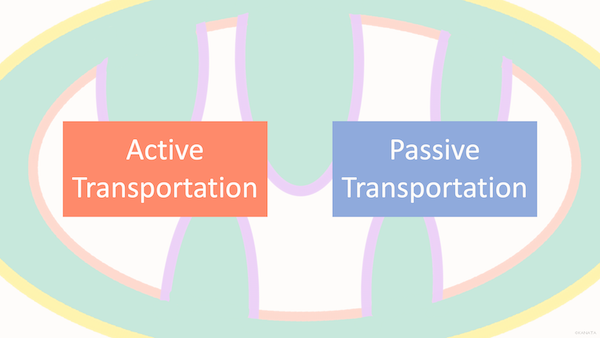
I have no idea.
So, what are active transport and passive transport in the first place?
Hmm. Both refer to methods of transportation.
Methods of transportation?
Yes. Passive transport refers to transportation methods that do not require energy (ATP) and move from an area of higher concentration to lower concentration.
And active transport, on the other hand, is a transportation method that requires energy (ATP) and moves substances from an area of lower concentration to higher concentration.
I'm still not quite clear on it.
Hmm. As a commonly used example, let's consider a hill.
A hill?
Following the concentration gradient, moving from a higher concentration to a lower concentration requires no energy, and this is called passive transport.
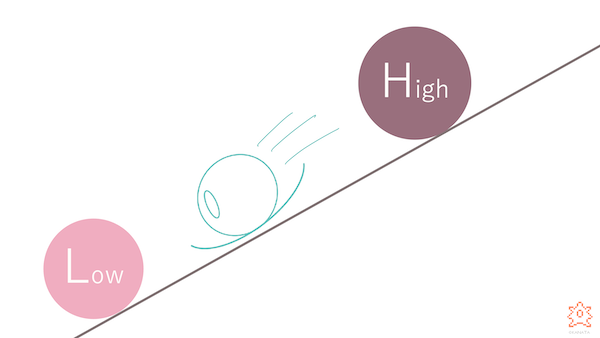
Moving against the concentration gradient, from a lower concentration to a higher concentration, requires energy, and this is known as active transport, more or less.
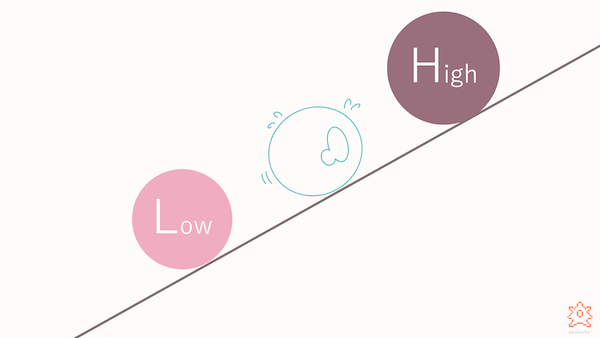
I think I can picture it a bit better now.
Hmm. Let's start by explaining passive transport first.
The key difference lies in whether it requires energy (ATP) or not.
Passive Transport
Let's start by explaining passive transport.
Please do!
So, here's the scenario: Cellnosuke's friend has a video they want to send. If it were up to you, would you send this video through "Isosta" or "Loin"?
Which one would you use?
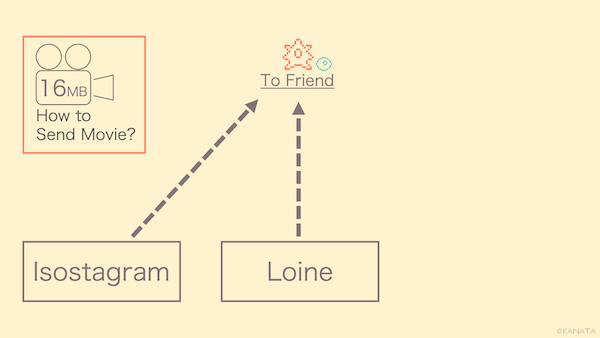
I'd use "Twipper."
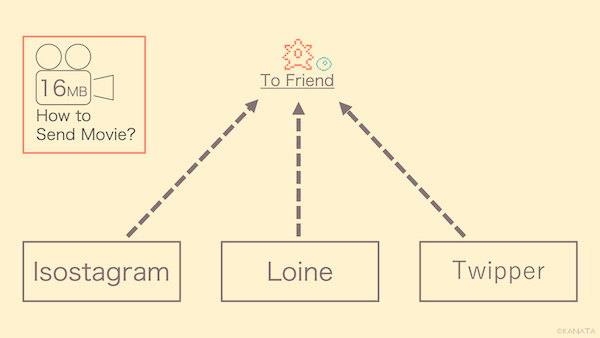
(Young people these days...)
Alright then. What if "Isosta" could send the video without worrying about speed limits? What would you do in that case?
In that case, I would use "Isosta."
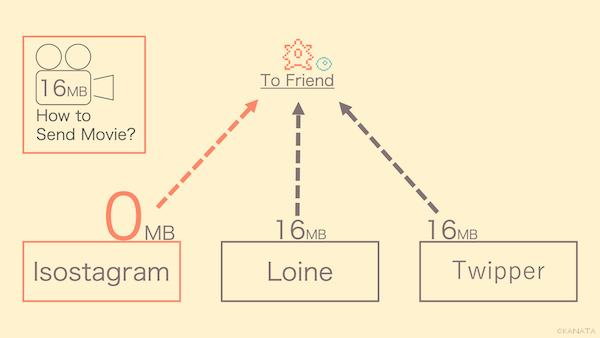
That's right.
Huh?
What I want you to understand here is that in this example,
Isosta incurs no cost, or in other words, requires no energy (ATP) to send the video.
Similarly, in the human body, there are transportation methods that don't require energy (ATP).
We call that passive transport.
Oh, I see!
Specifically, diffusion, osmosis, and filtration fall under passive transport.
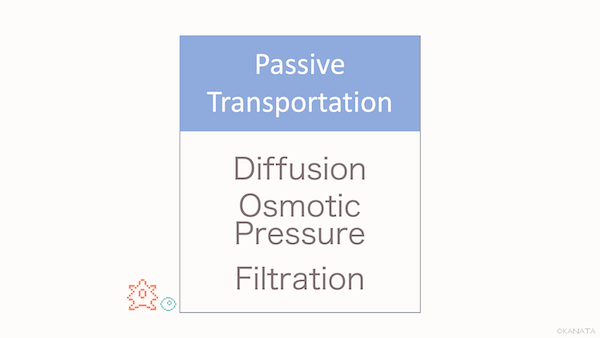
Suddenly, it got a bit complicated with the terminology.
You don't have to think of it as too complicated.
Diffusion, for example, is the phenomenon where milk added to coffee spreads throughout over time.
I think I understand it a bit better now.
Very well. To sum it up, these are all considered passive transport.

I think I can imagine it a bit better now.
Great. Now, let's move on to the explanation of active transport.
Yes!
Remember that passive transport includes diffusion, osmosis, and filtration.
Active Transport
Active transport is a method of transporting substances that requires energy (ATP).
In the example of video transmission we discussed earlier, both "Loin" and "Twipper" require energy (ATP), making it active transport.
While passive transport moves from areas of higher concentration to lower concentration,
active transport involves moving from areas of lower concentration to higher concentration, just like climbing uphill.

I can somewhat visualize it now.
One crucial concept to grasp in active transport is the sodium pump.
Sodium pump?
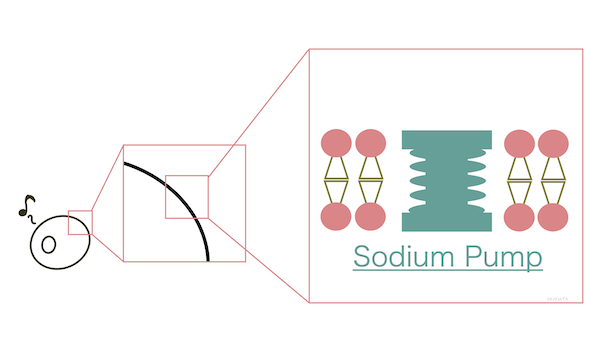
Although the terminology may sound complex, think of it as a gate embedded in the cell membrane.
A gate?
Yes, it is. Have you ever been told to consume more salt, especially during hot weather?
Yes, I have.
Well, in both our bodies and the external environment, there are inorganic salts, or better known as minerals.
Rather than calling them inorganic salts, you can think of them as minerals.
That makes it easier to imagine.
Indeed. Consuming salt is a way to replenish minerals in your body.
Why are minerals in our bodies in the first place?
That's a good question.
The answer is to keep our bodies moving.
Is it really that important?
Yes, it is. When cells first move, they generate electricity.
And to generate that electricity, a large amount of sodium rushes into the cell from the outside.
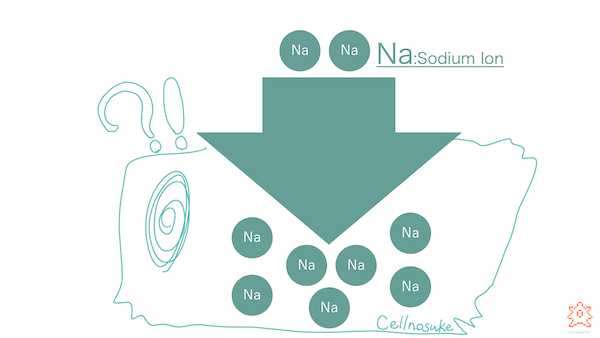
Sodium seems quite forceful.
Indeed, it is. However, without this movement of sodium, cells cannot function.
In other words, it's crucial for life.
That's astonishing.
The problem arises afterward. After nerve cells have worked, they must return the sodium to its original location outside the cell.
However, sodium, being a mineral, won't move on its own.
So, if nothing is done, it will remain inside the cell.
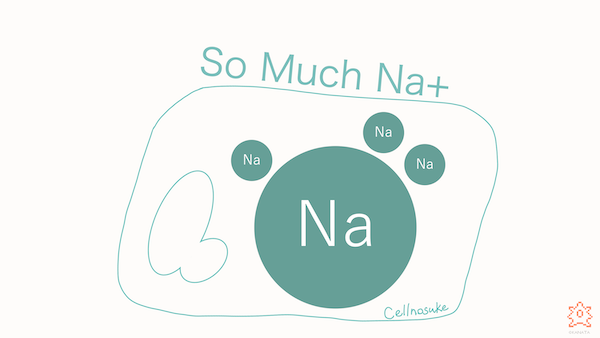
Is that a problem?
What's not good here is that if this continues, there won't be enough sodium for the next cell movement.
In other words, not moving sodium out would impact life.
That's not good at all.
Indeed. And that's where the sodium pump embedded in the cell membrane comes into play.
The sodium pump works to move sodium from inside the cell to the outside.
So, sodium passes through this gate called the sodium pump and returns to the outside of the cell.
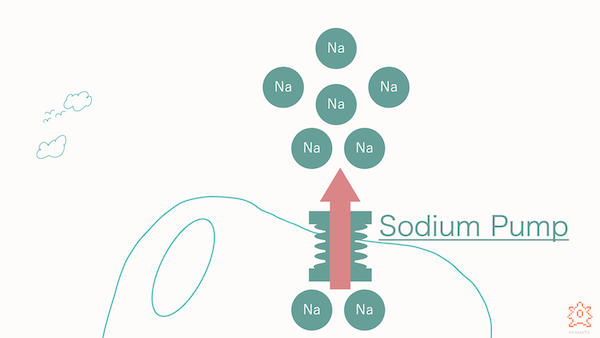
Strictly speaking, when sodium exits, it also brings potassium back into the cell, but you don't need to worry about that for now.
Now, let's get back to active transport.
When sodium is moved outside, it requires energy (ATP).
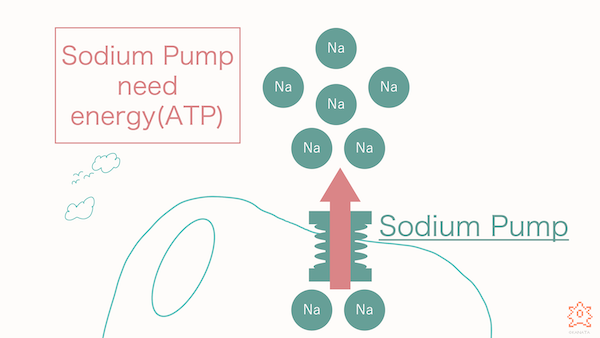
I know it's been a lengthy discussion, but all you need to understand here is that the sodium pump is an example of active transport.
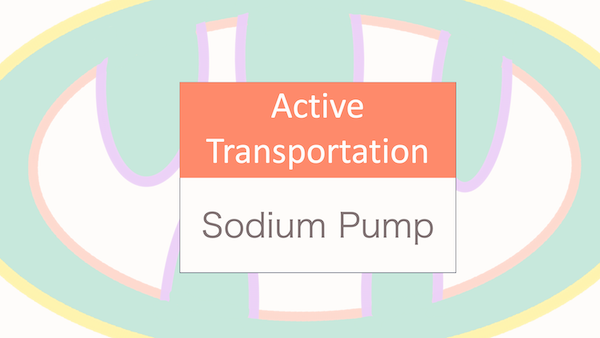
It's complicated, but I feel like I have a bit of an idea now.
That's right. I want you to remember the sodium pump as a transport mechanism, including for future study materials.
Understood!
You can tap on each speech bubble to access the lecture, so if you forget something, be sure to check them.
Got it!
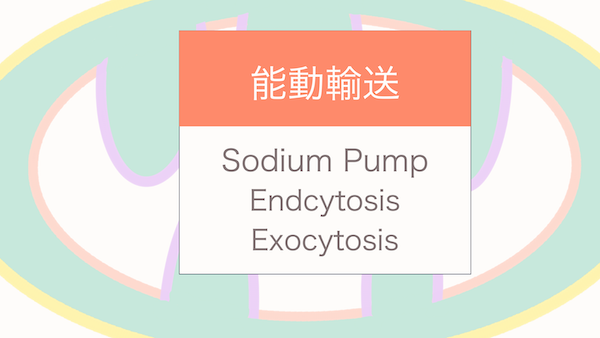
Remember active transport, which includes the sodium pump, endocytosis, and exocytosis.
Summary
Today's lecture had more information than usual, so let's conclude today's lesson.
Please do!
First, the difference between passive transport and active transport lies in whether or not they require energy (ATP).
Representative examples of passive transport include diffusion, osmosis, and filtration.

On the other hand, I listed sodium pumps, endocytosis, and exocytosis as representative examples of active transport.

So, it's surprisingly few when you summarize it.
That's right. However, just by remembering these examples, your understanding of physiology will deepen in the future.
So, make sure not to neglect reviewing them.
Understood!
With that, let's conclude today's lecture.
Thank you very much!
Finally, let's solve a problem.
Active transport requires energy (ATP), while passive transport does not.
Diffusion, osmosis, filtration
Sodium pump, endocytosis, exocytosis